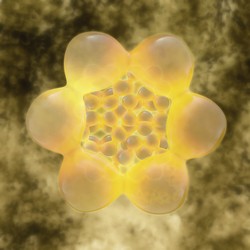Therapeutic brown fat to tackle obesity
Fat cells or adipocytes are either white or brown. White adipose tissue (WAT) specialises in chemical energy storage, and excess of WAT leads to insulin resistance and type 2 diabetes. BAT dissipates heat energy and is inversely correlated with age and body mass index. Sometimes, BAT is located in WAT and is classified as brown-in-white (BRITE). Recent research has highlighted the potential of activated BAT to enhance glucose disposal and improve systemic insulin sensitivity in insulin-resistant subjects. Researchers reckon that as little as 50 g of active BAT could be turned into a 20 % increase in daily energy expenditure. Universities, research institutions and biotech companies under the project DIABAT(opens in new window) (Recruitment and activation of brown adipocytes as preventive and curative therapy for type 2 diabetes) worked on activating brown fat cells to raise that metabolic rate to combat obesity. The DIABAT team developed novel cell and animal models as well as common protocols and standard operation procedures. Using these tools and technologies, they obtained deeper insight into the differentiation, function and physiological regulation of brown adipocytes. They also identified novel pathways involved in activating or inducing formation of BAT cells. To monitor BAT-related metabolic parameters, DIABAT scientists built prototype modules that assemble for a mobile monitoring device for humans. They also developed suitable imaging and analysis techniques and observed in situ BAT activity in humans. An intriguing and significant finding, cold-acclimation helps combat insulin resistance in type 2 diabetic patients. Researchers detected and validated an arsenal of nutritional and pharmacological compounds that modulate BAT and BRITE activation. One type of bile acid demonstrated human BAT activation and thermogenesis. DIABAT research results were published in over 120 peer-reviewed papers and review articles as well as numerous joint publications. Other dissemination activities include a brochure and press releases. Energy-consuming BAT-centred therapies could sustainably and effectively treat metabolic disorders without the risks associated with conventional treatments. Project findings have paved the way for commercialisation of DIABAT regenerative technologies, which should enhance the competitiveness of European businesses in the biomedical sector.







